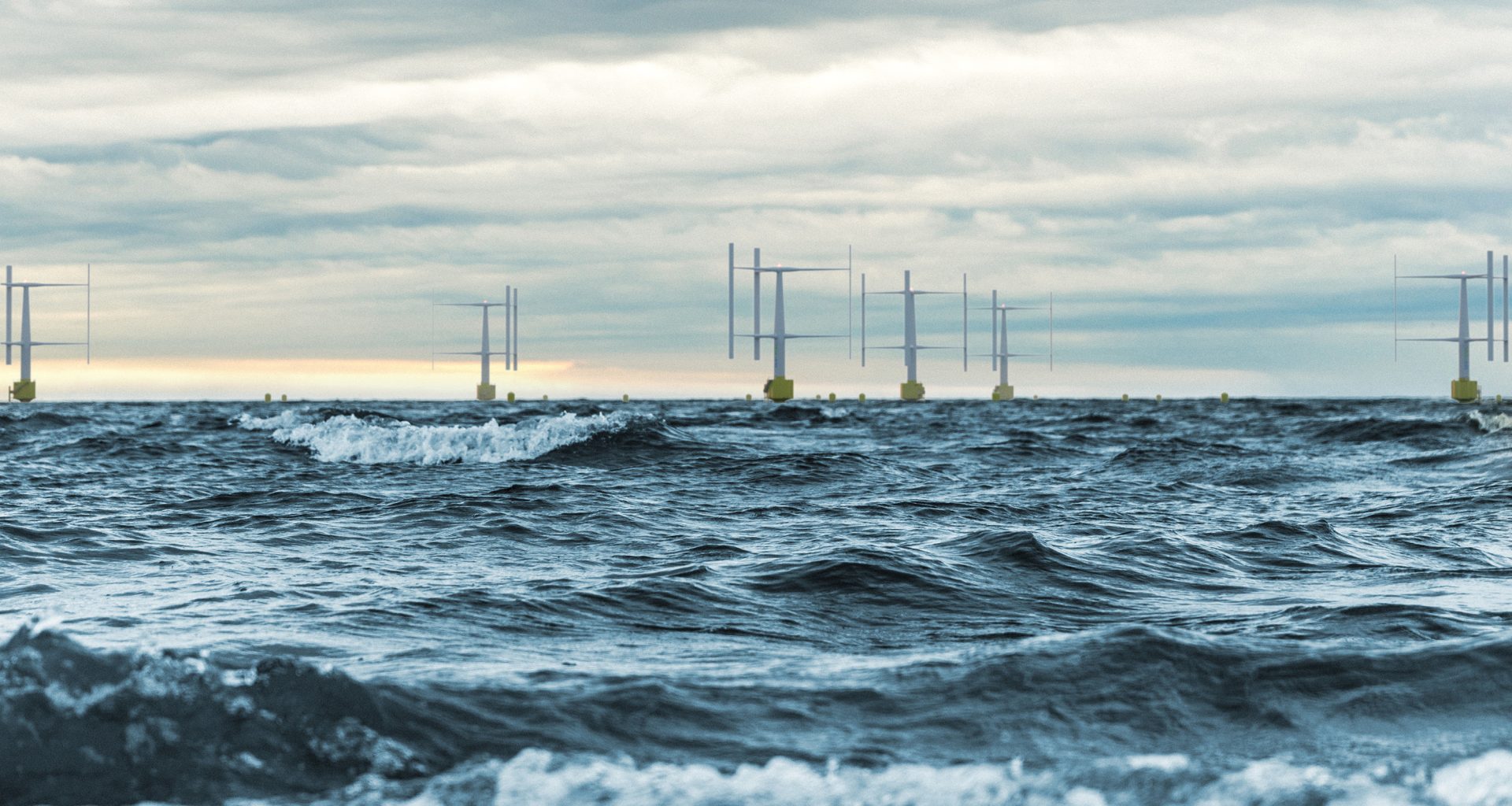The newest way to get energy from the wind is as simple as it is innovative: Floating vertical axis wind turbines.
Innovative solutions are constantly being sought in a world increasingly focused on sustainable energy. Floating Vertical Axis Wind Turbines are a newer addition to the energy landscape that deserves further attention. Recently, a maker of these turbines, SeaTwirl, received its first commercial order, showcasing confidence in the technology and marking an exciting advancement in renewable energy.
Vertical axis wind turbines (VAWTs) rotate around an upright axis, unlike the common horizontal axis turbines we often see. This unique design offers several advantages, especially when used in offshore applications.
Floating vertical axis wind turbines represent a cutting-edge advancement in renewable energy technology, offering innovative solutions and tremendous potential in harnessing wind power. Unlike traditional horizontal axis wind turbines, VAWTs can catch the wind from any direction, providing more consistent performance.
Floating VAWTs have several advantages, particularly when deployed in deep waters where traditional offshore turbines might be prohibitively expensive. The floating platforms on which the turbines are mounted allow them to be placed in various water depths, providing flexibility in site selection. This ability opens up new locations previously unsuitable for wind energy harvesting, particularly in regions with deep coastal waters.
The design of floating VAWTs involves aerodynamic considerations, allowing the turbines to rotate around a vertical axis. This unique configuration enables them to capture wind energy regardless of wind direction, enhancing efficiency and operational consistency.
Connecting these floating wind turbines to the onshore electrical grid requires detailed planning and sophisticated technology. Specialized underwater electrical cables are used to transmit the electricity generated by the floating turbines to the shore. These cables must be designed to withstand the harsh marine environment, including high pressure, saltwater corrosion, and potential physical damage from anchors or marine life.
On the floating platform itself, transformer stations are installed to increase the voltage the turbines produce. This helps minimize energy loss during transmission through long underwater cables. A dynamic positioning system is used to maintain the optimal position relative to wind direction and sea currents. This system ensures that the turbines remain in place and that the connections to the shore are not overstressed or damaged by the movement of the floating platform.
Once the electricity reaches the shore, it is directed to an onshore substation. Here, it undergoes further transformation to match the voltage level of the local grid and necessary conditioning such as filtering and phase balancing. The conditioned electricity is then fed into the local electrical grid through synchronization systems that ensure the electricity’s frequency, voltage, and other characteristics are compatible with the existing network.
Sophisticated monitoring and control systems are implemented offshore and onshore to ensure safe and efficient operation. These systems allow for real-time adjustments to turbine operation based on wind conditions, energy demand, and grid requirements.
While they have increased complexity due to their floating design, vertical axis wind turbine counterparts offer new possibilities, giving a unique edge in the ever-evolving energy landscape. The combination of advanced aerodynamics, floating platforms, and a comprehensive connection system makes them a powerful and flexible solution for wind energy generation.
SeaTwirl’s first commercial order signals a shift in the industry, validating the potential of floating vertical axis wind turbines. As businesses and governments continue to seek sustainable energy solutions, this technology may play a significant role, with this order being the first of many. The success and acceptance of this technology could inspire further innovation and adoption across the renewable energy sector.
The order for SeaTwirl is more than a business transaction. It signals a commitment of companies to pursue cleaner energy alternatives. Floating vertical axis wind turbines aren’t just an innovative approach to wind energy; they represent a shift in thinking. Like the development of bladeless wind energy, they are an embrace of the new and untested. They are, perhaps, a glimpse into the future of renewable energy.
The world is leaning toward a greener future, and the winds of change are blowing favorably for innovations like floating vertical axis wind turbines. The recent commercial order is not just a validation of a product but a positive signal for the renewable energy industry as a whole. By embracing these advancements, society takes one step closer to a sustainable future.










